MCST
MCST (Moscow Center Spark (SPAR) Technologies) is a Russian company specializing in the development of universal microprocessors, microcontrollers and control computing systems ( wiki ).
In short, this is the very organization that developed the famous series of Elbrus processors used in Elbrus domestic supercomputers (they did not bother with the names).
In principle, all the information lies on Wikipedia and offsite , and I can hardly tell you more about the TTX process, but I can provide a small photo report from the battlefield.
So, in a shaggy 1994 Sun Microsystems releases the microSPARC II processor, with which it completes the SPARCStation 4/5/10/20 (SPARCStaion 5, which, by the way, the most hard-core iron fans can still get to us ):
')
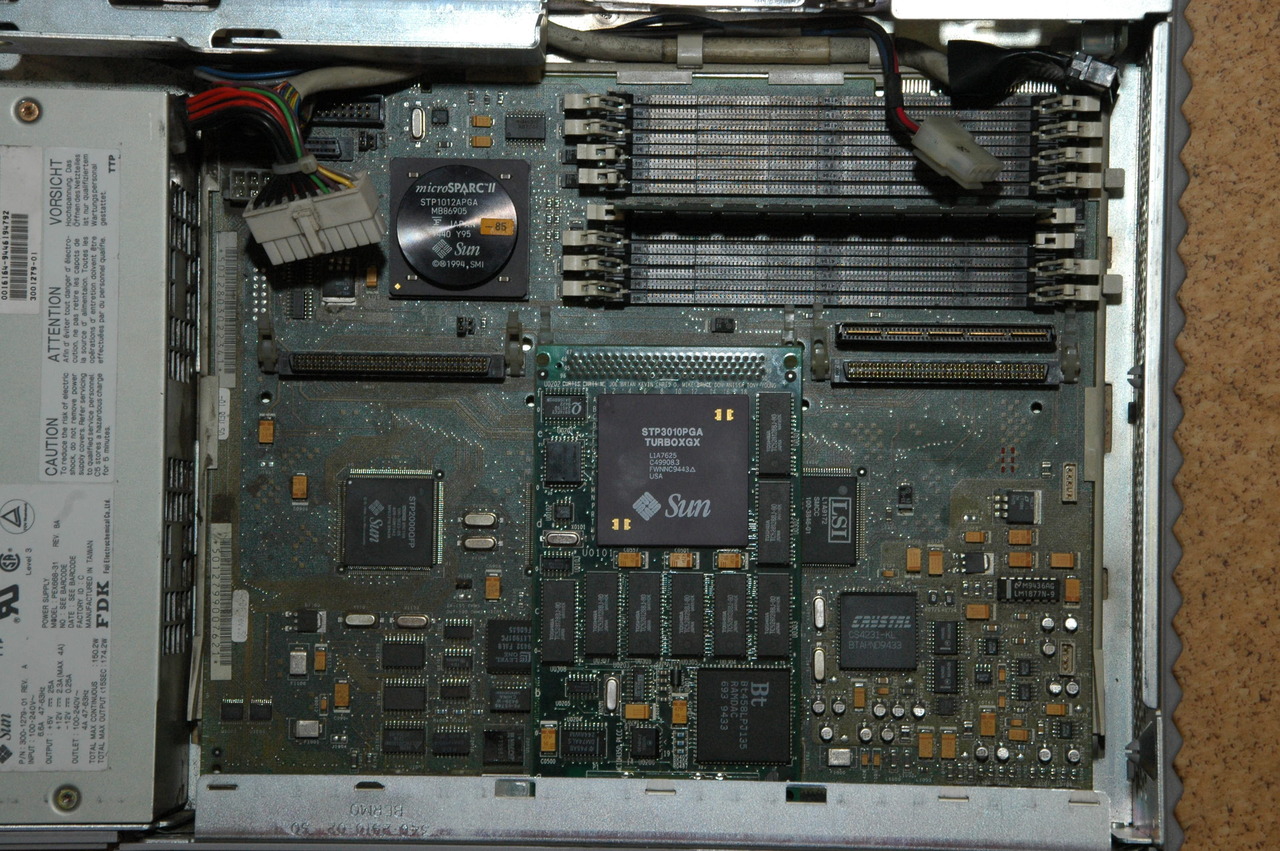

This model was equipped with a 85MHz microSPARC-II processor with an integrated PCI controller for embedded systems. In the second photo you can see the motherboard with the installed video card and memory. The whole line of computers is called “Pizzabox” or, as our men called it, the pizza. At one time it was really very high quality and popular cars, produced up to 1995. Later they were replaced by a more advanced line of Sun Ultra .
At the same time, the MCST, not wanting to throw its experience along the SPARCStation line, buys a license to manufacture similar products under the MCST brand:
UPD . In the comments, some do not quite correctly interpret the "buy a license" combination. A license is an opportunity to produce spark-compatible processors. No source code to the processor does not. From this it follows that the MCST itself designed its own SPARC core.
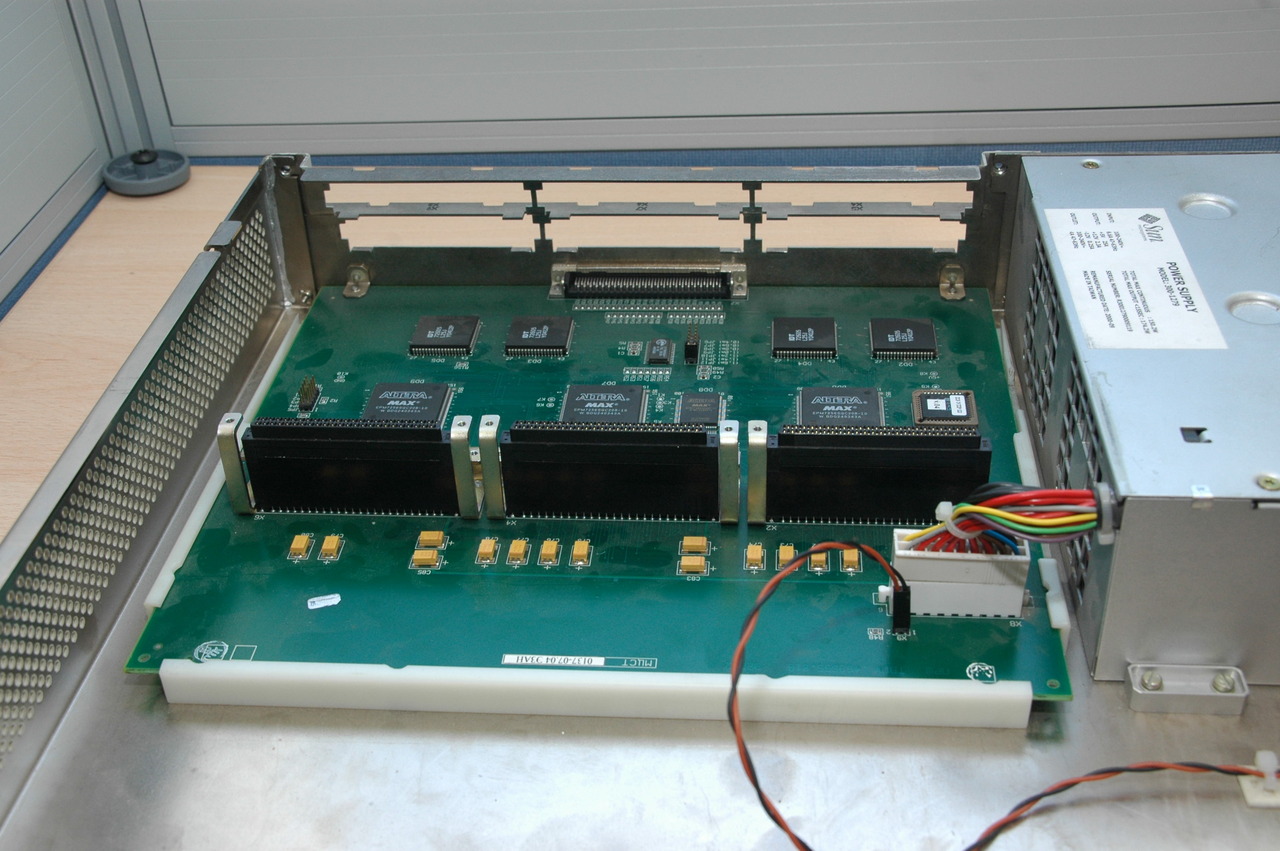
By the way, it is very funny to look at the production of plastics in our country. Everything that exceeds the ruler by 20 cm in complexity is replaced with iron counterparts (for example, the Americans have a plastic lintel, we have an iron bolt). Although there is a certain logic in this too: Americans make these jumpers in huge quantities, but we need them all — nothing. And the bolts ... it's somehow our way, or something.
But a more modern version of our production SPARCStation, equipped with 2 MCST R500 processors (installed on the processor module):
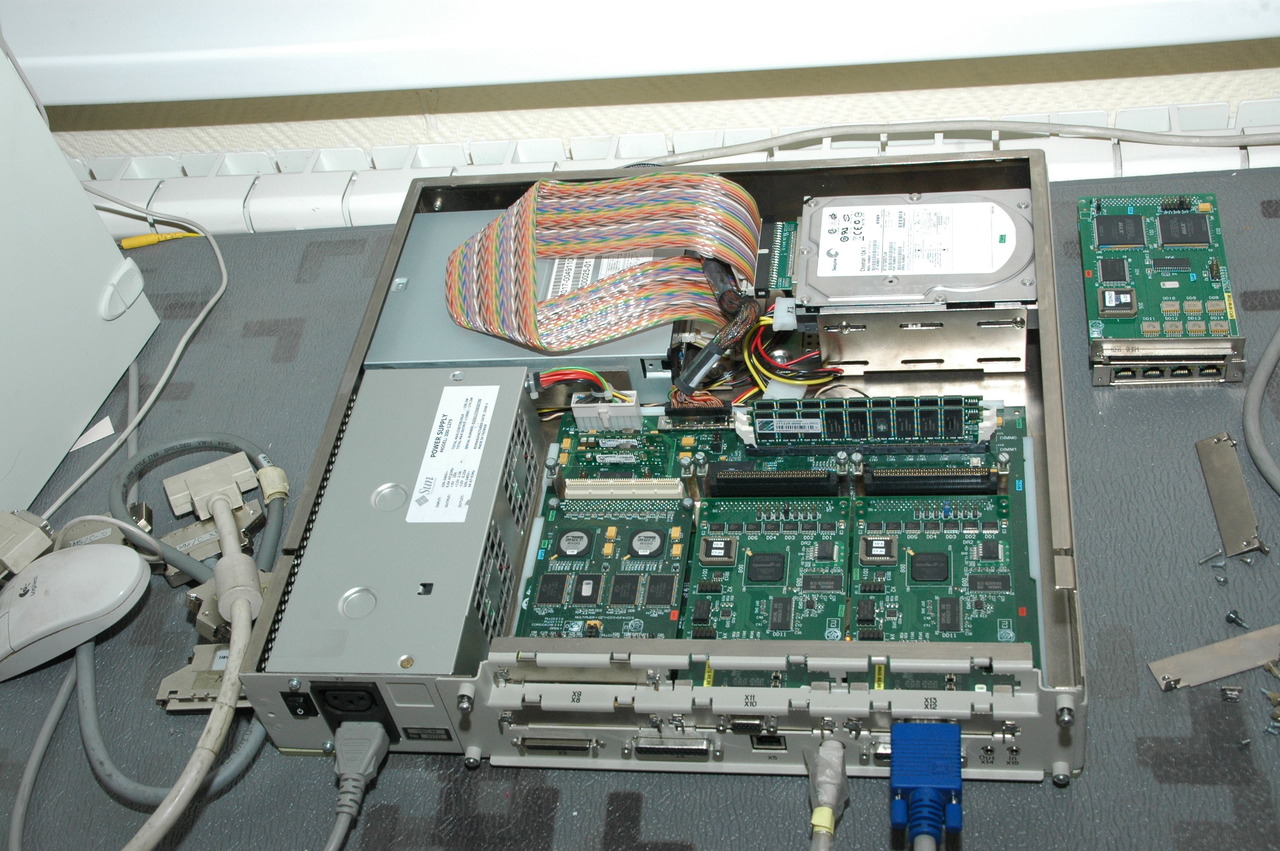
In general, the MCST processors are extremely compact, and in view of the low power dissipation (<1 W), they do not require any radiators, let alone coolers.
Next to the processors, there are 4 SRAM chips (18Mb each) on the board.

For those who do not like to follow the links, here are the technical specifications here:
It should be understood that 500 MHz for the SPARC architecture and 500 MHz for the x86 architecture cannot be compared with the usual frequency mapping. For example, the 300-megahertz "Elbrus-3M" is comparable in performance to a Pentium 4 2000 MHz.
UPD : It's worth making a correction. SPARC and x86 may well be compared, and the first only in some tasks will be slightly more productive.
Elbrus-3M is a VLIW architecture (this is used, for example, in Intel Itanium), so its performance is comparable with the Pentium 4 2000 GHz.
And these are the power units of the processors. R500 requires accurate supply voltage.
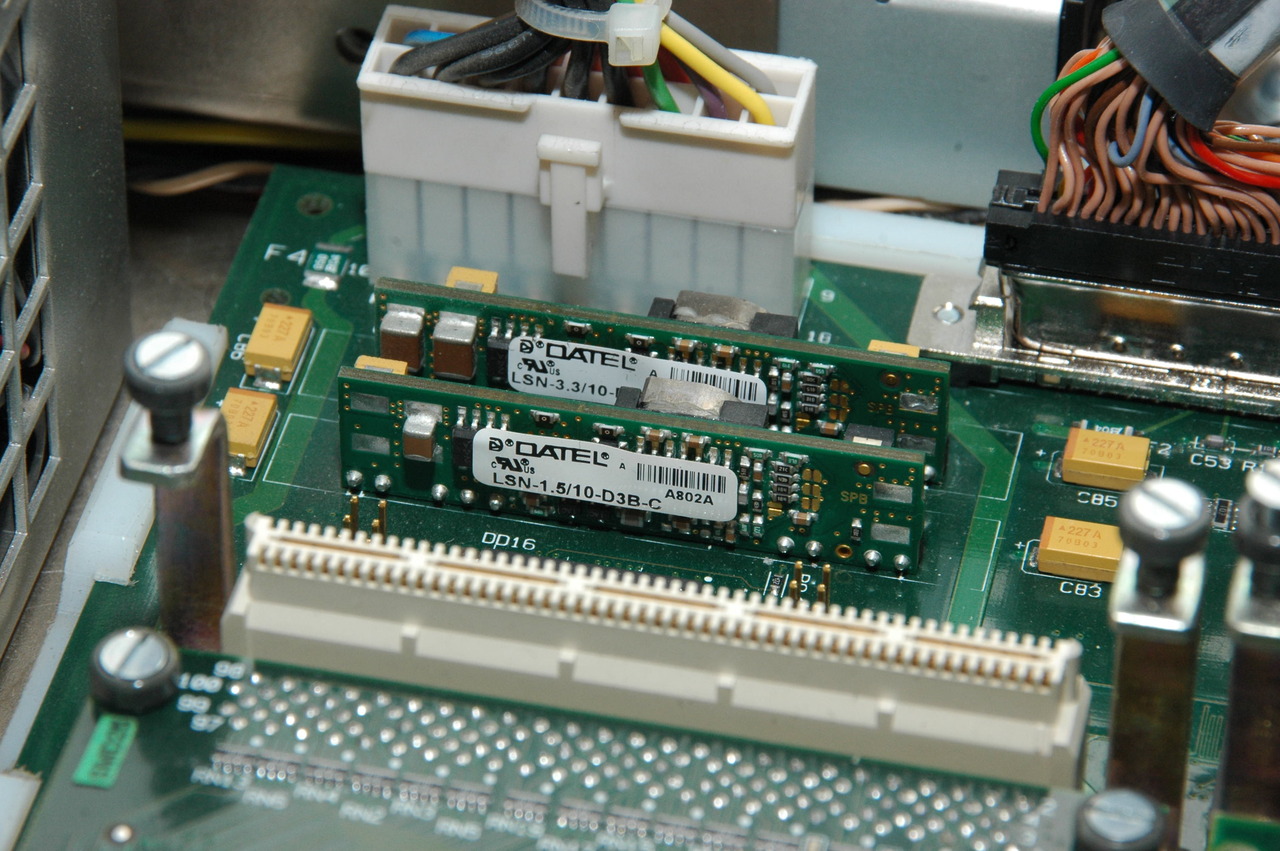
Desktop ATX version of the computer MCST:

Hardware errors are detected here:

This photo shows two black armored monitors of domestic production. With them, you can hone the right hook and uppercut :) Naturally, in addition to impact resistance, the monitor can work in all weather conditions, be it the bitter cold of Antarctica, the sultry sun of the Sahara desert.
By the way, if I'm not mistaken, the monitor on the right is the development of Horizon.
Yes, and we also really liked the cool three-button Sun mouse :)
But this device is the main direction of work of the MCST:
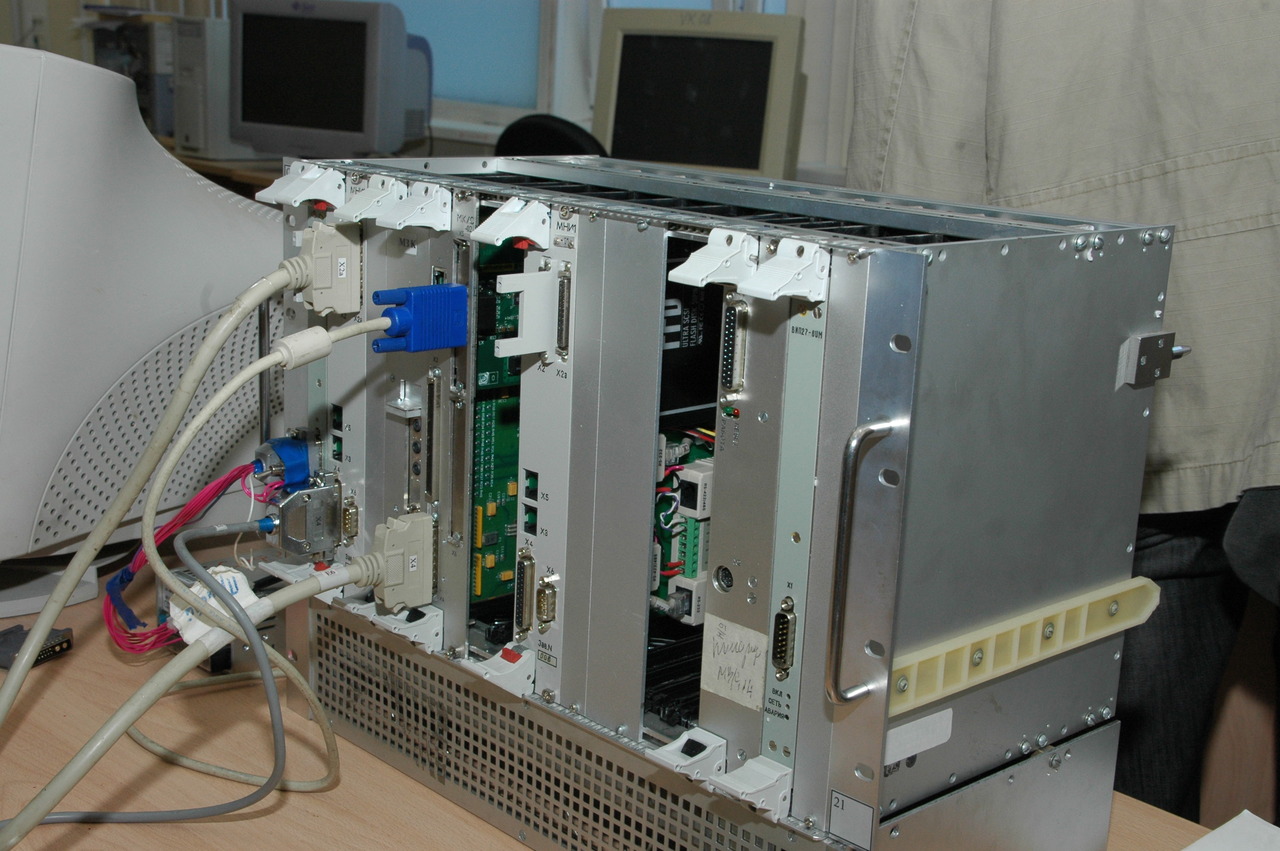
The computing complex consists of expansion modules on the CompactPCI system bus, which allows you to significantly expand the functionality of the device in the right direction (you need computational power - we insert a bunch of modules with processors there, we need a lot of disk space - we insert modules with hard drives). Euromechanics standard, so everything is unified.
In the future, a special cabinet is assembled from several of these modules that protects computing systems from vibration and shock during transportation, and is sold to the military for ~ 1.5 million rubles per piece. Orders are from a few pieces to a few dozen pieces. In general, everything that appears here is sold to the military. Less often, various scientific research institutes are bought in order not to depend on American equipment in the event of, for example, war.
It’s just empty:
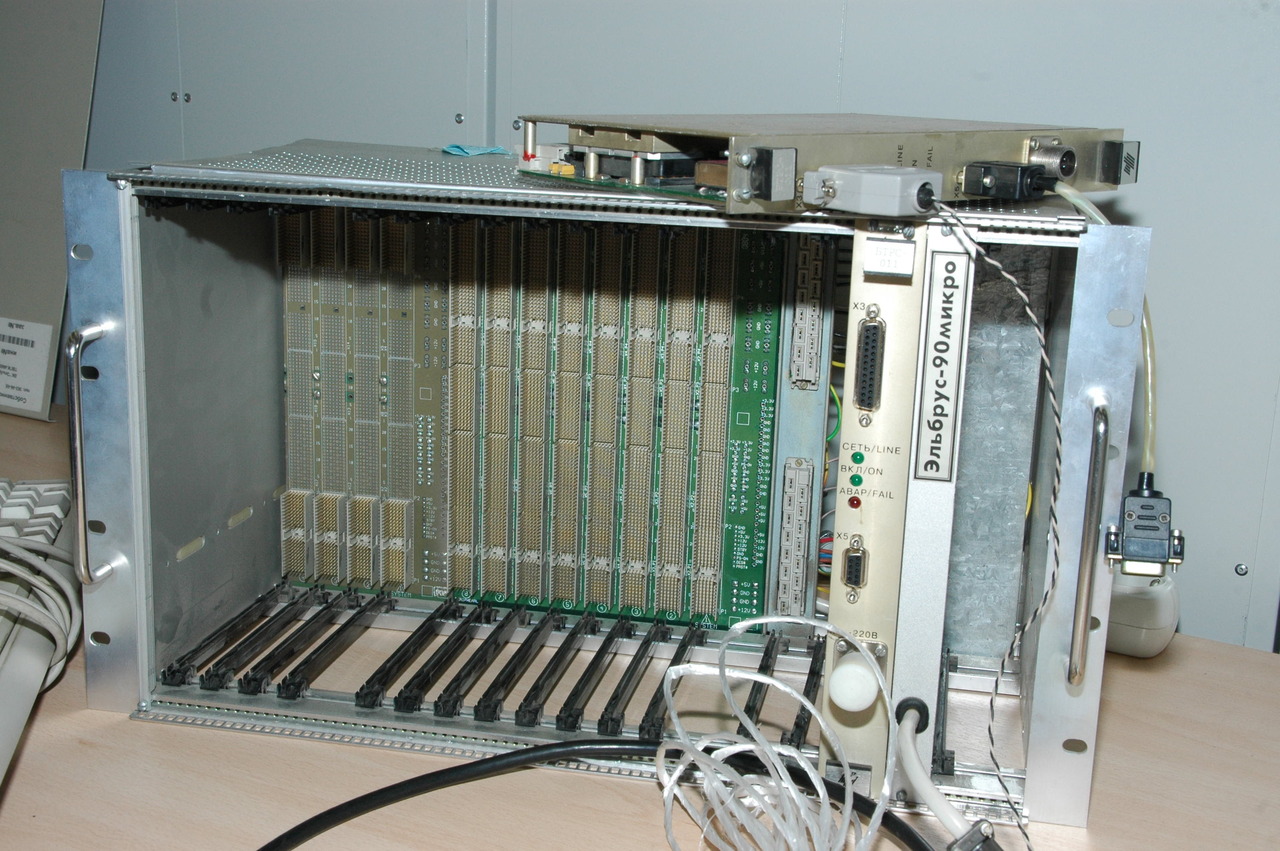
This is what the hard disk drive module looks like:
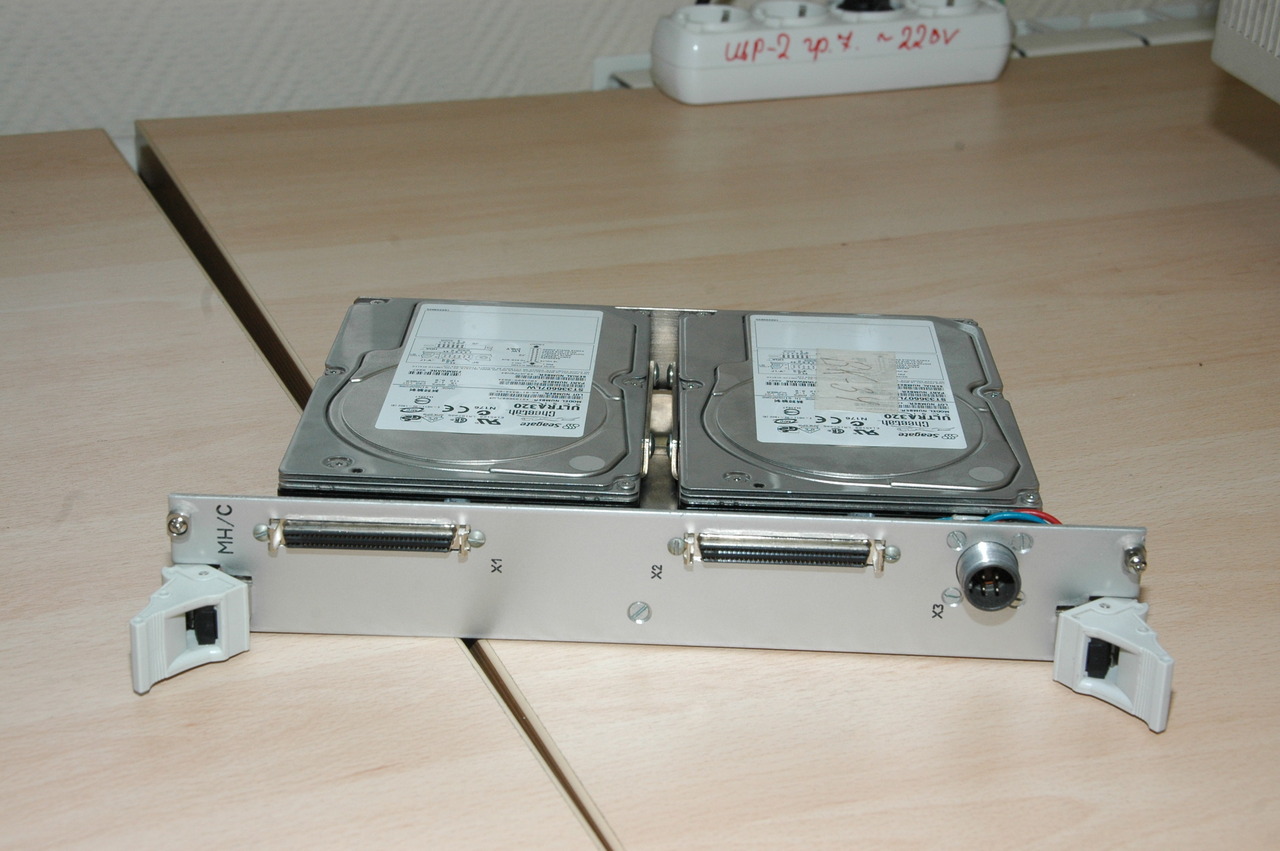
In the latest versions of the hard drives insert SSD Ultra320 SCSI. The total cost of such a module with one SSD fluctuates around $ 8,000.
Module for testing processors:
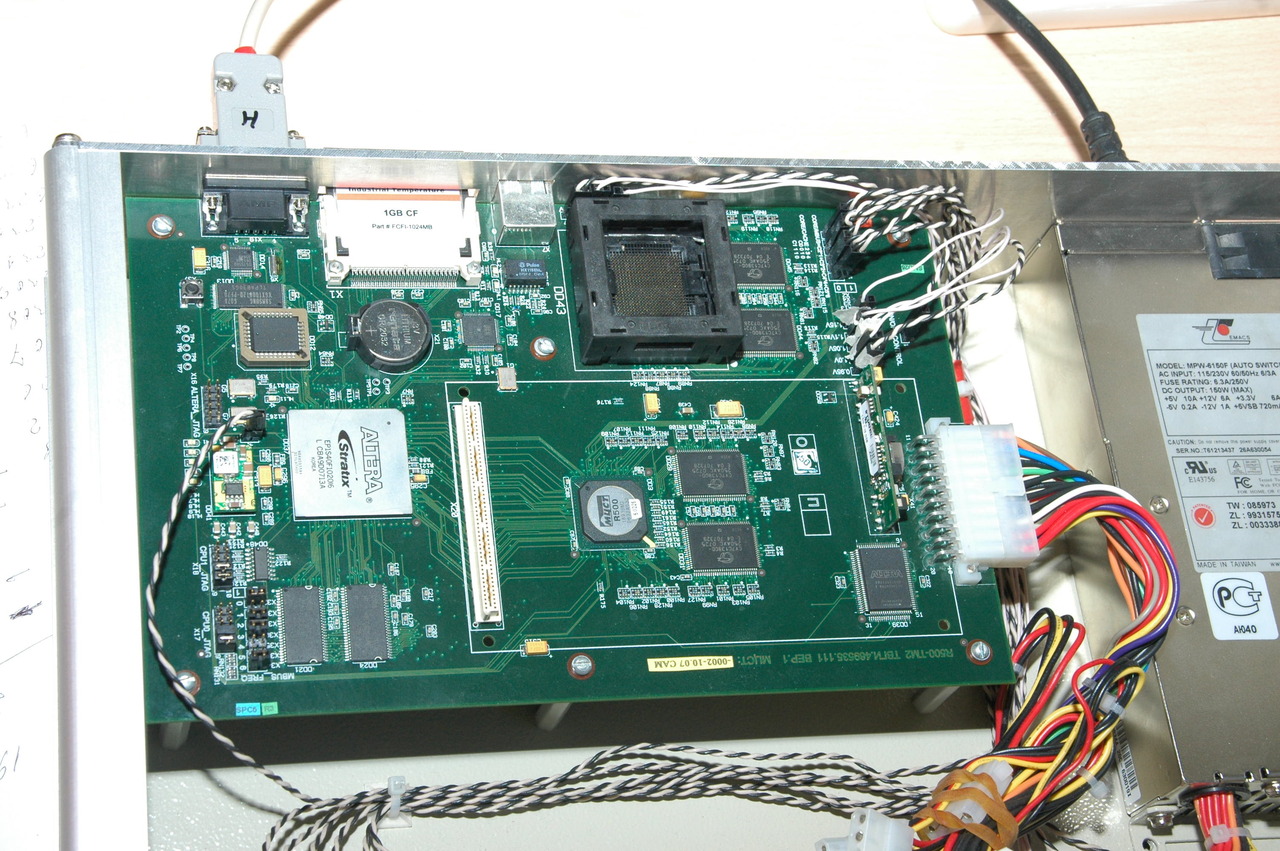
A processor is inserted into the black socket on the top (hot-swappable is available). Unfortunately, in Russia there are no production possibilities for their manufacture and domestic microprocessors are made in China, therefore, each processor is tested on such stands. This, so-called, continuous input control, after all, the office works on the military office.
The board is worth FPGA Altera EP1S40F1020I6 (as we were told, such schemes at the time of purchase cost 32 thousand dollars apiece, I found it on the offsite for 2 thousand dollars). Some stands use 14 of these FPGAs.
Also Altera chip can be found near the power supply.
Here's what it looks like in the collection:
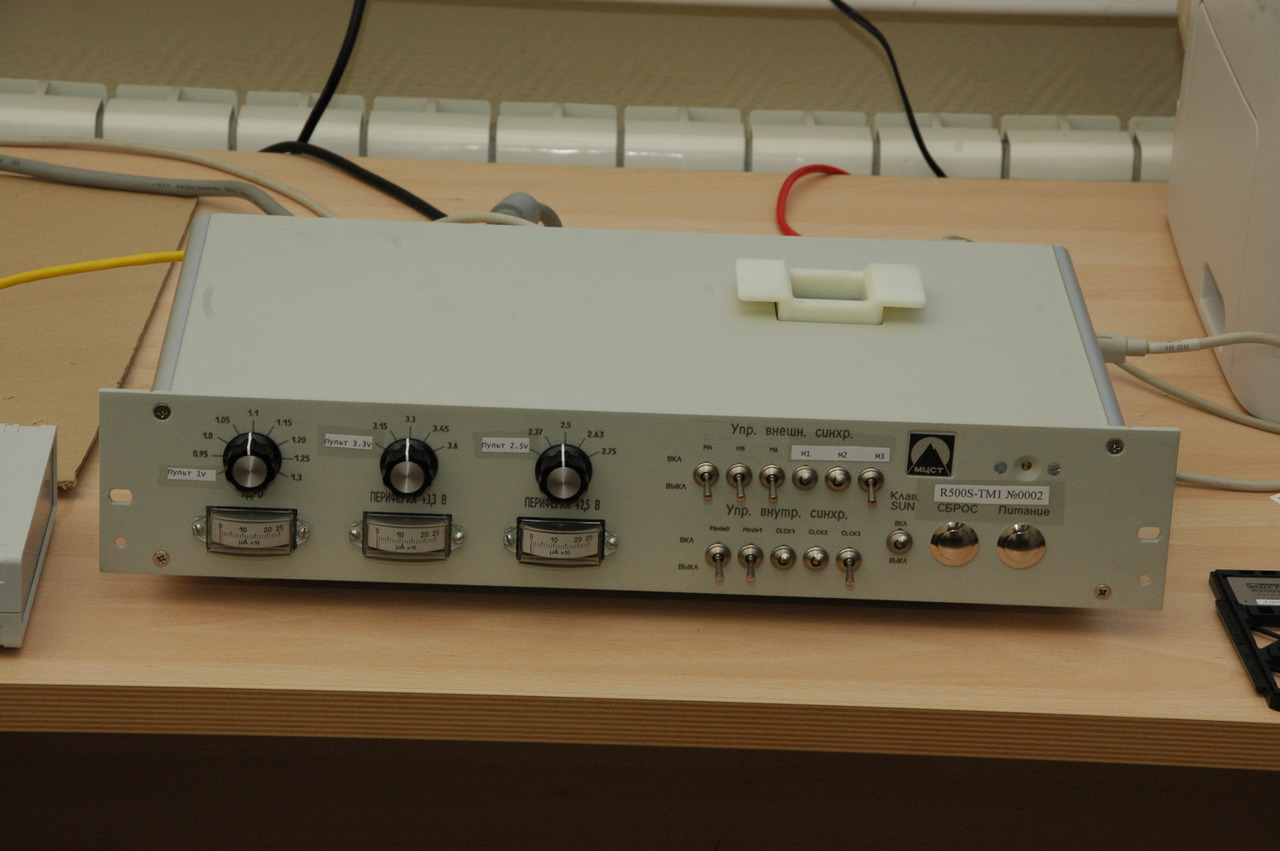
Or so:
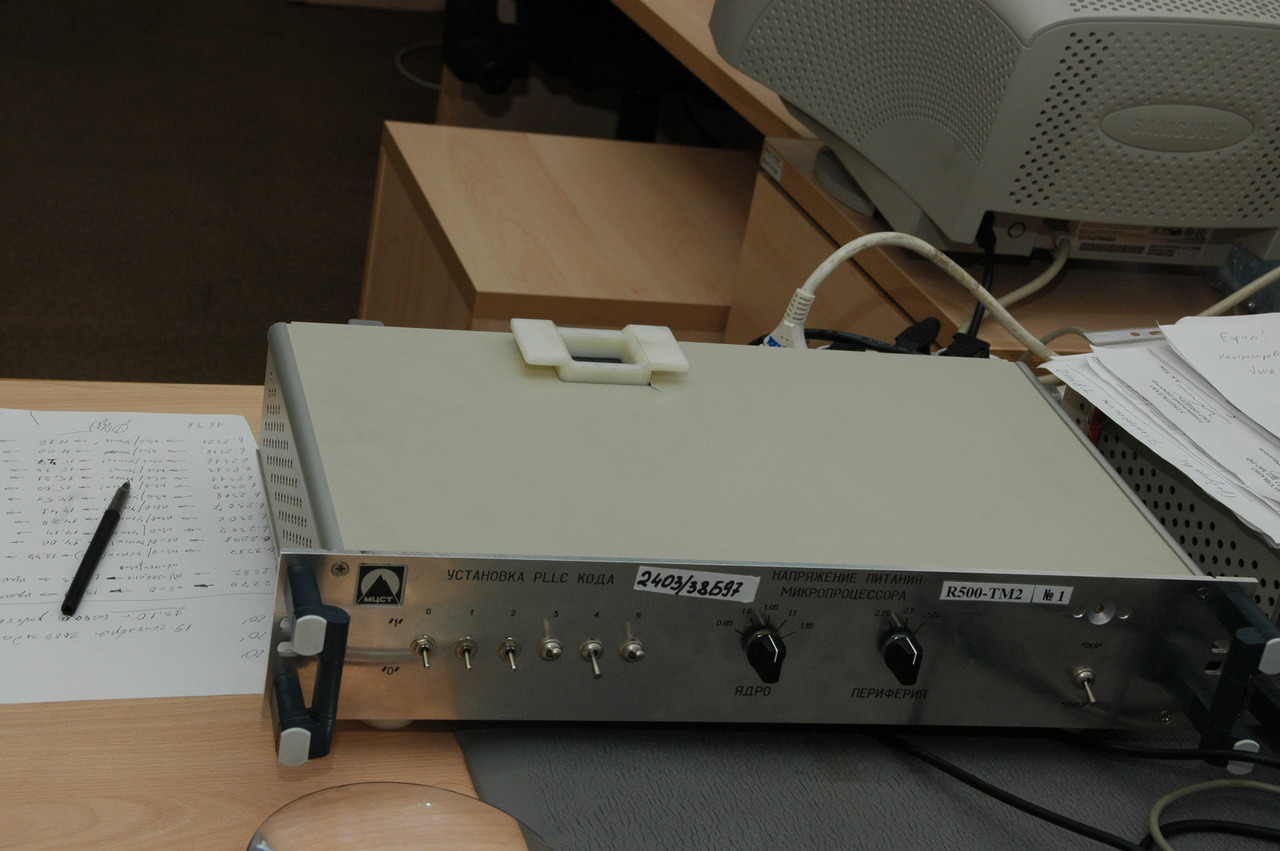
And this is how the cabinets with modules look like (photo from the stand; I only saw live an empty cabinet):

Here, perhaps, everything that I can show you today.
When we were still with them, the people really hoped for the Angstrom-T plant in Zelenograd to transfer production from China (yes, all these our processors are made there) to us, to Russia. But, according to recent data , the situation with this plant is not clear.
In general, we will not perish. We produce processors, technologies, although not so fast, are still moving (for example, the 4-nuclear MCST-4R already inspires confidence). Of course, you shouldn’t expect our processors to enter the world market in the near future (although the MCST management plans to do this), but we are very pleased to realize that our computers, and not bad ones, are not only able to do, but also do.
I am pleased to try to answer your questions, but I immediately say that I am not familiar with the detailed technical characteristics of the equipment.
PS: the article was written with the help of my colleague MrMager, who got a job at the MCST andwho does not have an invite to Habr. I thank habrayuzer Tutufa for an invite. Greetings to the new habrauser and, if possible, giving it a plus: mrmager
Taking this opportunity, I express my gratitude to a5b for the essential additions to the article, and also thanks to all habrovchan that they corrected, supplemented, discussed and shared new things in the comments and PM.
In short, this is the very organization that developed the famous series of Elbrus processors used in Elbrus domestic supercomputers (they did not bother with the names).
In principle, all the information lies on Wikipedia and offsite , and I can hardly tell you more about the TTX process, but I can provide a small photo report from the battlefield.
So, in a shaggy 1994 Sun Microsystems releases the microSPARC II processor, with which it completes the SPARCStation 4/5/10/20 (SPARCStaion 5, which, by the way, the most hard-core iron fans can still get to us ):
')


This model was equipped with a 85MHz microSPARC-II processor with an integrated PCI controller for embedded systems. In the second photo you can see the motherboard with the installed video card and memory. The whole line of computers is called “Pizzabox” or, as our men called it, the pizza. At one time it was really very high quality and popular cars, produced up to 1995. Later they were replaced by a more advanced line of Sun Ultra .
At the same time, the MCST, not wanting to throw its experience along the SPARCStation line, buys a license to manufacture similar products under the MCST brand:
UPD . In the comments, some do not quite correctly interpret the "buy a license" combination. A license is an opportunity to produce spark-compatible processors. No source code to the processor does not. From this it follows that the MCST itself designed its own SPARC core.

By the way, it is very funny to look at the production of plastics in our country. Everything that exceeds the ruler by 20 cm in complexity is replaced with iron counterparts (for example, the Americans have a plastic lintel, we have an iron bolt). Although there is a certain logic in this too: Americans make these jumpers in huge quantities, but we need them all — nothing. And the bolts ... it's somehow our way, or something.
But a more modern version of our production SPARCStation, equipped with 2 MCST R500 processors (installed on the processor module):

In general, the MCST processors are extremely compact, and in view of the low power dissipation (<1 W), they do not require any radiators, let alone coolers.
Next to the processors, there are 4 SRAM chips (18Mb each) on the board.

For those who do not like to follow the links, here are the technical specifications here:
| Specifications | Meanings | |
|---|---|---|
| one | Technological process | CMOS 0.13 micron |
| 2 | Working frequency | 500 MHz |
| 3 | Word size: | 32/64 |
| four | Level 1 instruction cache | 16 KB (4 way) |
| five | Level 1 data cache | 32 KB (8 way) |
| 6 | Level 2 external cache | 4 MB |
| 7 | Bandwidth communication buses with cache memory level 2 | 1.6 GB / s |
| eight | MBus bus bandwidth | 0.8 GB / s |
| 9 | Crystal area | 25 mm² |
| ten | Number of transistors | 4.9 million |
| eleven | The number of metal layers | eight |
| 12 | Enclosure type / number of pins | BGA / 376 |
| 13 | Supply voltage | 1 / 2.5 V |
| 14 | Power dissipation | <1 W |
It should be understood that 500 MHz for the SPARC architecture and 500 MHz for the x86 architecture cannot be compared with the usual frequency mapping. For example, the 300-megahertz "Elbrus-3M" is comparable in performance to a Pentium 4 2000 MHz.
UPD : It's worth making a correction. SPARC and x86 may well be compared, and the first only in some tasks will be slightly more productive.
Elbrus-3M is a VLIW architecture (this is used, for example, in Intel Itanium), so its performance is comparable with the Pentium 4 2000 GHz.
And these are the power units of the processors. R500 requires accurate supply voltage.

Desktop ATX version of the computer MCST:

Hardware errors are detected here:

This photo shows two black armored monitors of domestic production. With them, you can hone the right hook and uppercut :) Naturally, in addition to impact resistance, the monitor can work in all weather conditions, be it the bitter cold of Antarctica, the sultry sun of the Sahara desert.
By the way, if I'm not mistaken, the monitor on the right is the development of Horizon.
Yes, and we also really liked the cool three-button Sun mouse :)
But this device is the main direction of work of the MCST:

The computing complex consists of expansion modules on the CompactPCI system bus, which allows you to significantly expand the functionality of the device in the right direction (you need computational power - we insert a bunch of modules with processors there, we need a lot of disk space - we insert modules with hard drives). Euromechanics standard, so everything is unified.
In the future, a special cabinet is assembled from several of these modules that protects computing systems from vibration and shock during transportation, and is sold to the military for ~ 1.5 million rubles per piece. Orders are from a few pieces to a few dozen pieces. In general, everything that appears here is sold to the military. Less often, various scientific research institutes are bought in order not to depend on American equipment in the event of, for example, war.
It’s just empty:

This is what the hard disk drive module looks like:

In the latest versions of the hard drives insert SSD Ultra320 SCSI. The total cost of such a module with one SSD fluctuates around $ 8,000.
Module for testing processors:

A processor is inserted into the black socket on the top (hot-swappable is available). Unfortunately, in Russia there are no production possibilities for their manufacture and domestic microprocessors are made in China, therefore, each processor is tested on such stands. This, so-called, continuous input control, after all, the office works on the military office.
The board is worth FPGA Altera EP1S40F1020I6 (as we were told, such schemes at the time of purchase cost 32 thousand dollars apiece, I found it on the offsite for 2 thousand dollars). Some stands use 14 of these FPGAs.
Also Altera chip can be found near the power supply.
Here's what it looks like in the collection:

Or so:

And this is how the cabinets with modules look like (photo from the stand; I only saw live an empty cabinet):

RESULTS
Here, perhaps, everything that I can show you today.
When we were still with them, the people really hoped for the Angstrom-T plant in Zelenograd to transfer production from China (yes, all these our processors are made there) to us, to Russia. But, according to recent data , the situation with this plant is not clear.
In general, we will not perish. We produce processors, technologies, although not so fast, are still moving (for example, the 4-nuclear MCST-4R already inspires confidence). Of course, you shouldn’t expect our processors to enter the world market in the near future (although the MCST management plans to do this), but we are very pleased to realize that our computers, and not bad ones, are not only able to do, but also do.
I am pleased to try to answer your questions, but I immediately say that I am not familiar with the detailed technical characteristics of the equipment.
PS: the article was written with the help of my colleague MrMager, who got a job at the MCST and
Taking this opportunity, I express my gratitude to a5b for the essential additions to the article, and also thanks to all habrovchan that they corrected, supplemented, discussed and shared new things in the comments and PM.
Source: https://habr.com/ru/post/81171/
All Articles